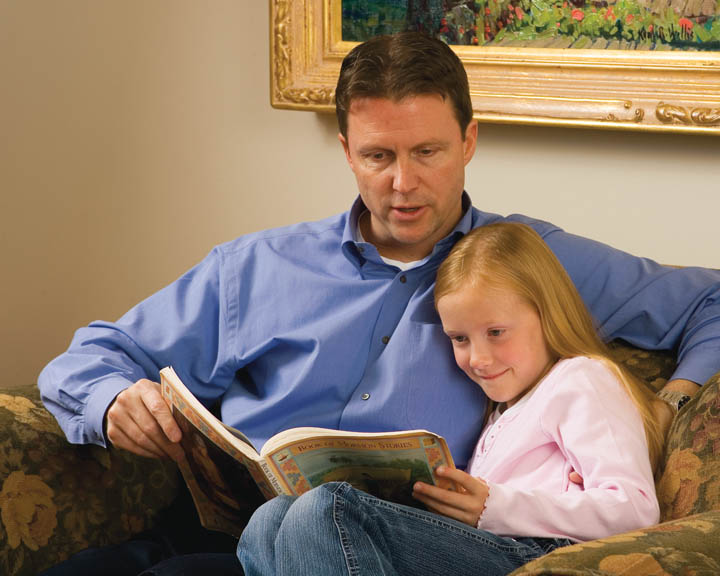I grew up surrounded by books. I fondly remember the crate of books my parents brought with them on family vacations. Dad mainly read Louis L’amour. Mom read books from every genre.
 We got books every year at Christmas with our stockings. Sometimes one of our books would have a bookmark and we always felt bad for that person… it meant mom had started reading their book, and they would have to wait until she was done. The week after Christmas was filled with reading, sharing what we had read and negotiating turns with each other’s books. I remember reading the Little Princess, laying on the floor under the grand piano.
We got books every year at Christmas with our stockings. Sometimes one of our books would have a bookmark and we always felt bad for that person… it meant mom had started reading their book, and they would have to wait until she was done. The week after Christmas was filled with reading, sharing what we had read and negotiating turns with each other’s books. I remember reading the Little Princess, laying on the floor under the grand piano.
When I served a mission, I only read church material, and mostly scriptures, for a year and a half. I couldn’t wait to read a book when I got home. I will forever remember the first book I read after my mission, http://www.goodreads.com/book/show/122.The_Power_of_One, I was so excited to have a book in my hand again, I took it everywhere. I remember wanting to read it while driving, picking it up at stoplights and catching myself reaching for it at a STOP sign!
I really love to read. When we decided to homeschool, my biggest priority was to teach my children to read. As I watched my own children, and read John Holt and a book called Better Late than Early: A New Approach to Your Child’s Education, by Raymond S. Moore, Dennis R. Moore, and Dorothy N. Moore, I started to think critically about how I wanted to teach my children to read, and how children learn to read.
This is what has worked for our children
1. Read for yourself. Read. Find books you enjoy. Go to the library yourself. Having parents who read is the number one indicator that the child will love reading. Don’t read to show your child how to read…read because there are so many good books out there and so little time. Put down your phone, step away from the computer, and fall back in love with a book.
2. Read to your children. Have fun! Read the books you remember loving as a child. My mom must have read Madeline to me thousands of times, because when I first read it to my own children I knew the words. Children frequently love to repeat favorite books… over and over and over and over. Although that repetition can be mind-numbing to the parent, it is very valuable to the child. They are learning word recognition, grammar, how to better understand the story, and how to fall in love with books. A repeated book becomes part of your family culture.
 3. Learn the alphabet-I’m not talking flash cards, although if your child loves it, go ahead. Point out the letter that starts their name. Make letter-shaped bread sticks, buy alphabet pasta or pretzels. Play with the Scrabble tiles. It’s fun. PLAY. I really like Letter of the Week.
3. Learn the alphabet-I’m not talking flash cards, although if your child loves it, go ahead. Point out the letter that starts their name. Make letter-shaped bread sticks, buy alphabet pasta or pretzels. Play with the Scrabble tiles. It’s fun. PLAY. I really like Letter of the Week.
4. Phonics. We use Explode the Code. My children love this program. It is fun, quick and repetitive. It goes through each letter of the alphabet, consonants first, to teach the sound and shape. I can’t count how many times I have woken up to see my young child by my bed holding their phonics book, begging to start. Phonics should be fun!
5. Wait. Then wait longer. Then wait. The first three books of explode the code teach every letter. The fourth book starts you reading (cat, hat…). In my experience there is a developmental readiness involved in learning to read that you just can’t force. It’s like learning to walk or speak. You can help them and work with them… But one day they will be straining and struggling to sound each word out very mechanically, the next day they will just smoothly read. It’s like magic. Something just clicks.
For some of my children this has taken a few weeks, for others it has taken years. Have faith it will happen. Keep reading to your child. Wait. You can’t pull reading out of them any more than you can make them walk or speak. They may read at 4 or 11. Can you guess which of your friends learned to read first? Did Einstein learn to read before or after George Washington? It really won’t matter later when your child learns to read!
When we let children go at their own pace, we don’t make them feel they are slow or behind. Let them be. Read to them. Love them. Wait with them.
6. Don’t wait– there are times when you shouldn’t wait. Hold on to mother’s intuition… not mother guilt that everyone else’s child is reading, but intuition that something isn’t right. Learning disabilities demand special instruction and coping skills. Work to help your child get the help they need. There are all sorts of resources to make that happen.
7. Read! Keep reading to your child. When they read with you, if they don’t want to struggle to sound out a harder word… give it to them. That just means they are interested in the story! Good. Some children will want you to wait a painstakingly long time while they slowly figure the word out for themselves. The same child may go back and forth between these extremes. Some of my good readers have still wanted me to read, because they like time with me, or want the story quicker or just want to hear it.
Watching your child learn to read is an amazing experience. Nothing beats finding a child with their nose in a book, lost in another world
About Britt Kelly
Britt grew up in a family of six brothers and one sister and gained a bonus sister later. She camped in the High Sierras, canoed down the Colorado, and played volleyball at Brigham Young University. She then served a mission to South Africa.
With all of her time in the gym and the mountains and South Africa, she was totally prepared to become the mother of 2 sons and soon to be 9 daughters. By totally prepared she means willing to love them and muddle through everything else in a partially sleepless state. She is mostly successful at figuring out how to keep the baby clothed, or at least diapered, though her current toddler is challenging this skill.
She feels children naturally love to learn and didn’t want to disrupt childhood curiosity with worksheets and school bells. She loves to play in the dirt, read books, go on adventures, watch her children discover new things, and mentor her children. Her oldest child is currently at a community college and her oldest son is going to high school at a public school. She loves to follow her children in their unique paths and interests.
She loves to write because, unlike the laundry and the dishes, writing stays done. Whenever someone asks her how she does it all she wonders what in the world they think she’s doing.
Twitter •






